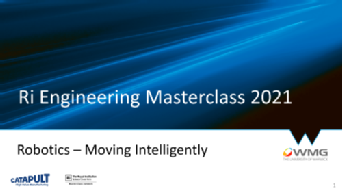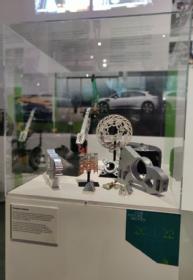WMG News
Inspiring young engineers with STEM masterclasses
The WMG Outreach Team has successfully completed another series of Royal Institution Engineering Masterclasses.
This series was a little different to those in years gone by with the Masterclasses forced online by the Covid 19 pandemic.
Professor Margaret Low, WMG’s Director of Outreach and Widening Participation said: “WMG has supported the Ri with masterclasses, since 2013, with workshops and activities that put our cutting-edge engineering research into context for young people. Our masterclasses have been run in person each year since 2013 so we were determined not to miss a year for 2021, finding a way to deliver the activities online instead.
“These experiences allow students to see how their school learning applies to complicated and world-changing technologies. Through our outreach programmes we hope to inspire young people to pursue careers in STEM, widen participation in Higher Education and make the STEM workforce more diverse.”
The project was run virtually, by WMG staff and students, for two local schools; Nicholas Chamberlaine in Bedworth, and Northleigh House in Warwick, with a special focus on intelligent vehicles.
The WMG team used Kitronik project boxes to introduce the ideas of intelligent vehicles, calibrating components, coding, algorithms, and to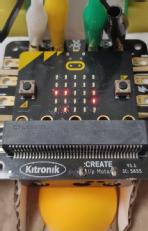 explore how design technology is used to balance the pros and cons of any creation.
explore how design technology is used to balance the pros and cons of any creation.
The children were tasked with making, testing and then improving a car that a computer can control.
The teacher said: “The students were really engaged and got so much out of it. Considering it was video link and the first event they've been able to do like that in ages.”
Rachel Dorris, Masterclass Programme Manager at the Royal Institution added: “The Royal Institution (Ri) has been collaborating with Warwick University for many years to bring hands-on workshops to school students, and we are very pleased to be working with Northleigh and Nicholas Chamberlaine schools this year. Ri Masterclasses offer students an engaging, collaborative taste of STEM subjects involving mathematics, engineering and technology. We aim for Masterclasses to increase interest and confidence in STEM subjects, creating a sense of engagement to last throughout students’ school careers and beyond.”
Find out more about the WMG 2021 Ri Engineering Masterclasses here: Ri Engineering Masterclasses 2021 (warwick.ac.uk)
Scottish steel industry needs to be revived to thrive
- · The Scottish steel using sectors currently employ just under 1/3 of the Scottish working population, and accounts for 31.2% of Scotland’s turnover
- · With an ever-growing population the need for steel is increasing, meaning an opportunity is there for the Scottish steel sector
- · If investment in the sector happens it could result in making new types of steel such as crude, which is the most in demand but is currently the least manufactured in Scotland
The value of the Scottish steel using sectors in relation to the rest of the world and also the UK specifically has been analysed by researchers from WMG, University of Warwick, who have found investment could be the key to reviving the industry into a thriving industry.
Steel has played an important part of Scotland’s economy since 1751. The nation’s industrial heritage has relied upon steel, which has been a key part of shipbuilding, energy, rail and civil engineering industries. There have been 12 iron and steel works in Scotland with the last major one to close being Ravenscraig in 1992.
shipbuilding, energy, rail and civil engineering industries. There have been 12 iron and steel works in Scotland with the last major one to close being Ravenscraig in 1992.
There are currently 266,500 people employed in Scottish steel using industries, while indirect employees in the supply chains can be estimated at around 800,000, making a total of 1.06 million people – around a third of Scotland’s working population. The steel markets account for 31.2% of Scotland’s turnover, essentially meaning just under 1/3 of the population rely on Steel for income.
Between 2015 and 2030 the steel market across the UK is set to increase by 1.5 million tonnes, worth a total of £3.8billion to the UK economy, with the demand expected to increase in construction, machinery and engineering, and yellow goods (earth moving equipment).
However whilst the demand for steel is increasing, it is predominantly increasing for crude steel, which Scotland does not produce a significant amount of, in fact the largest steel plant in Scotland is Liberty Steel Dalzell in Motherwell, which doesn’t produce any crude steel.
In 2018 a total of 1.816 billion tons of crude steel was produced globally using blast furnace (BF) + basic oxygen furnace (BOF) and electric arc furnace (EAF) techniques. The United Kingdom produced 7.3 million tons of crude steel in 2018, 0.004% of global production. Scotland has produced less than 6000 tons of crude steel per year in the last three years. Global crude steel production is dominated by Asia, in particular China, which produced 928 million tons of crude steel alone in 2018.
In fact in 2018 there was £371.4m of imports of iron and steel into Scotland whereas their total iron and steel product exports stood at £313m, with £159m of that being exported to the EU.
Dr Russell Hall, from WMG, University of Warwick comments:
“The world’s population is set to increase from 7.7bn people in 2020 to 9.7bn in 2050, therefore the demand for steel will continue to increase, this provides an opportunity for Scotland to revive their steel industry and boost their income, however this will require coordinated government intervention and leadership into steel making capability, this could be in the form of direct investment, indirect support such as the reduction of energy costs or increase in skills provision for steelmaking.
“This could mean that Scotland could manufacture new steel types, expand current steel making capabilities, and reduce the operating costs for steel makers.
"If investment were to happen it could mean lower CO2 emissions, as it enables lower energy steel processing, it also enables the sector to work with existing supply chain and customer demands, and put state of the art equipment into Scottish steel manufacturing. In combination with Scotland’s renewable energy agenda it could see green steel production at the heart of Scotland’s manufacturing industry”.
ENDS
25 OCTOBER 2021
NOTES TO EDITORS
High-res images available at: https://warwick.ac.uk/services/communications/medialibrary/images/september_2021/9652258404_7a8c8e9679_b.jpg
Caption: Forth Rail Bridge over the Firth of Forth in Scotland
Report available to view at: https://warwick.ac.uk/fac/sci/wmg/research/materials/wmg_scottish_steel_sector_report_final.pdf
For further information please contact:
Alice Scott
Media Relations Manager – Science
University of Warwick
Tel: +44 (0) 7902 531 211
E-mail: alice.j.scott@warwick.ac.uk
Margot James, Executive Chair, comments on the Government’s new Net Zero Strategy
Expert comment from Margot James, Executive Chair at WMG, in response to the Government’s Net Zero Strategy.
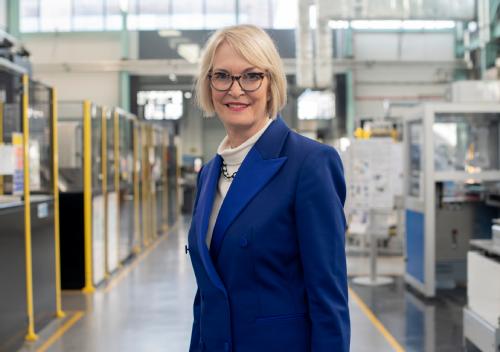
"The decarbonisation of personal transport, by moving to Electric Vehicles (EVs), will be a major contributor to delivering on this target as EVs become a viable option for the majority of consumers. Viability depends upon EVs being affordable and drivers having access to a reliable network of fast charging in urban and rural networks"
UK Government Net Zero Strategy
Find out more about the new National Skills Framework that has been created by WMG, The Faraday Institution and the High Value Manufacturing Catapult: New National Electrification Skills Framework and Forum could put the UK at the forefront of the green revolution News
Dr Ben Silverstone comments on the Government’s new Net Zero Strategy
Expert comment from Dr Ben Silverstone, WMG’s National Electrification Skills Framework and Forum Programme Lead, in response to the Government’s Net Zero Strategy.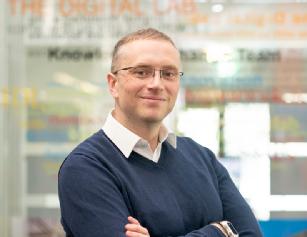
“We welcome the Government’s Net Zero strategy and the commitment to reform the skills system to allow providers to be more responsive to industry need, which is what we have called for in the recently launched National Electrification Skills Framework. Our focus is to re-skill, up-skill and new-skill working with the automotive sector to ensure their workforce has the necessary skills to be able to meet the 2035 and 2050 targets set by government.”
Find out more about the new skills framework that has been created by WMG, The Faraday Institution and the High Value Manufacturing Catapult here: New National Electrification Skills Framework and Forum could put the UK at the forefront of the green revolution - WMG :: News (warwick.ac.uk)
WMG Professor shares expertise in key parliamentary report
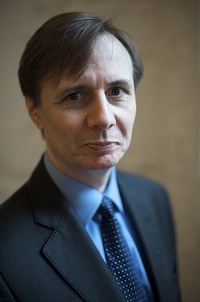 Professor Tim Watson, Director of WMG’s Cyber Security Centre, has shared his expertise in a key parliamentary POSTnote focusing on Smart Cities.
Professor Tim Watson, Director of WMG’s Cyber Security Centre, has shared his expertise in a key parliamentary POSTnote focusing on Smart Cities.
A POSTnote helps members of the House of Commons and the House of Lords, and UK parliament staff navigate complex topics and research in science, technology and social sciences.
This POSTnote looks at smart city innovation in the UK and technologies involved. It considers the factors driving adoption of smart city technologies, and the potential benefits, barriers and risks associated with their implementation.
Professor Tim Watson explains: “Smart cities use data and digital technology to make better decisions and improve the quality of life of people in the community. Local councils and governments can get more comprehensive, real-time data to understand how demand patterns are changing. This data can then be analysed to help with better decision making.”
Throughout the UK cities are, using this data, adopting strategies to boost their economy following the pandemic, allowing them to ‘build back better.’
Read more about Smart Cities here: https://post.parliament.uk/research-briefings/post-pn-0656/
Metal forming to be cleaner and greener thanks to UKRI fellowship
§ Dr Ed Brambley at the University of Warwick has been awarded a UKRI Future Leaders Fellowship to investigate how mathematics might make metal forming cleaner and greener
§ There is an industrial need for smarter metal forming to create new products, reduce scrap, compensate for more variable materials (e.g. recycled metals), reduce costs, and reduce energy usage. The project partners with Tata Steel and Primetals Technologies for industrial guidance and impact.
§ Smarter metal forming requires precise computer control, and the computer controller needs a theoretical model to predict what would happen if it were to make a change. These theoretical models are what is currently missing.
§ Dr Bramley will investigate using techniques from mathematical modelling of continuum solid mechanics and plasticity to produce theoretical models that are fast enough and accurate enough for real-time computer control of various industrial metal forming processes.
The future of smart metal forming will be investigated by Dr Ed Brambley at the University of Warwick thanks to his award of a UKRI Future Leaders Fellowship. The fellowship enables him to perform blue-skies research in mathematical modelling in continuum solid mechanics and plasticity, the outcome of which could be used to provide predictive theoretical models to make industrial metal forming greener and cleaner.
Dr Ed Brambley is an Associate Professor at the University of Warwick, at both the Maths and WMG departments. He is one of 97 scientists in the UK to receive a UKRI Future Leaders Fellowship in the 5th round, and over the next four years he will perform blue-skies research to investigate new mathematical modelling techniques that can make industrial metal forming cleaner and greener, thanks to £780k funding from UKRI and £230k funding from the University of Warwick.
Metal forming is the shaping of metal; examples from manufacturing include rolling metal to create thin sheets and stamping flat sheets of metal to form car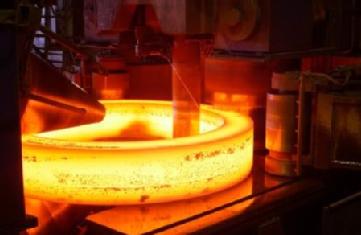 body panels. There is currently an industrial need for smarter metal forming in order to create new products, to reduce scrap, to compensate for more variable materials (e.g. recycled metals), to reduce costs, and to reduce energy usage.
body panels. There is currently an industrial need for smarter metal forming in order to create new products, to reduce scrap, to compensate for more variable materials (e.g. recycled metals), to reduce costs, and to reduce energy usage.
With current 21st century technology most people would expect computer-controlled metal forming processes, which would monitor the metal work piece during the forming process and adapt the process to correct any problems to obtain the desired end result.
However, the computer controller needs a theoretical model to predict what would happen if it were to make a change, in order to find the right changes to make, and such theoretical models are currently unavailable; and computer simulations are too slow for use in real-time.
The current state of the art is to use computer finite element simulations during process development or to diagnose problems, and then to use simple controllers (such as PID controllers) to blindly follow the pre-prescribed forming procedure.
New modelling techniques could give a substantial improvement, hence why Dr Ed Brambley will investigate techniques from mathematical modelling of continuum solid mechanics and plasticity, the outcome of which could be used to provide predictive theoretical models for industrial metal forming.
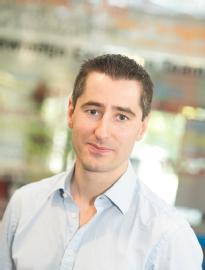 Dr Ed Brambley, from the University of Warwick, comments:
Dr Ed Brambley, from the University of Warwick, comments:
“Unlike existing computer simulations which work in all situations but are slow, my aim here is to take advantage of properties of particular metal forming processes, such as symmetry, or small parameters such as thin sheets, small deformations, and so on, and create bespoke simplified models specific to each of these processes.
“By accounting for these properties in a rigorous way, and using best practice mathematical techniques, I could produce quick-to-compute models with a guaranteeable accuracy. Such models would be exactly what is needed for online control of the metal forming process, and in the long term could create new products, reduce scrap, compensate for more variable materials such as recycled metals, reduce costs, and reduce energy usage.”
Not only will the funding help Dr Brambley’s research, it will also be used to support a post-doctoral researcher, and several PhD students from existing Warwick CDT’s will be involved in the research. Meaning Dr Brambley will be training a new generation of mathematicians and engineers to use these new mathematical modelling skills in industry.
ENDS
15 OCTOBER 2021
NOTES TO EDITORS
High-res images available at:
https://warwick.ac.uk/services/communications/medialibrary/images/september_2021/ring_rolling.jpg
Caption: Ring rolling metal forming
Credit: Hammerwerk Erft
https://warwick.ac.uk/services/communications/medialibrary/images/september_2021/ed_brambley.jpg
Caption: Dr Ed Brambley, WMG/Maths University of Warwick
Credit: WMG, University of Warwick
For further information please contact:
Alice Scott
Media Relations Manager – Science
University of Warwick
Tel: +44 (0) 7920 531 221
E-mail: alice.j.scott@warwick.ac.uk
WMG experts to present at key EV battery conference
 WMG’s Professor James Marco, Dr Ben Silverstone and Dr Anwar Sattar will be sharing their expertise at the IMechE’s International EV Batteries 2021: Cost-Effective Engineering for Hybrid and Electric Vehicles next month.
WMG’s Professor James Marco, Dr Ben Silverstone and Dr Anwar Sattar will be sharing their expertise at the IMechE’s International EV Batteries 2021: Cost-Effective Engineering for Hybrid and Electric Vehicles next month.
The two-day event which takes place on 9-10 November at Kia Oval, London, explores the latest developments in battery design, testing, thermal management, charging and integration right across the lifecycle of the battery with the aim of creating more resilient and cost-effective systems.
On day one, Professor James Marco, WMG’s energy storage expert will present ‘Smart battery development for improved EV safety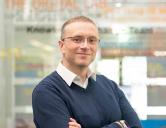 characterisation,’ and Ben Silverstone, WMG’s UK Electrification Skills Framework Programme Lead, will explain more about the 'National Battery Skills Framework: Collaborating to Elevate UK Industry.’
characterisation,’ and Ben Silverstone, WMG’s UK Electrification Skills Framework Programme Lead, will explain more about the 'National Battery Skills Framework: Collaborating to Elevate UK Industry.’
On the final day, Lead Engineer in Battery Recycling, Anwar Sattar will be presenting ‘Establishing a lithium-ion battery recycling industry in the UK,’ discussing types of waste material found along the supply chain, recycling processes required to deal with material streams, and explaining more about the RECOVAS research project.
Find out more about the conference and book your place here: International EV Batteries 2021: Cost-Effective Engineering for Hybrid and Electric Vehicles | London | CMP7333 (imeche.org)
Joint European effort boosts automated driving
- L3Pilot, Europe’s first comprehensive pilot test of automated driving on public roads demonstrates automated systems for cars in Hamburg, Germany, in conjunction with ITS World Congress 2021
- SAE Level 3 and 4 automated driving systems have been tested on ordinary roads in seven European countries, including cross-border activities, thanks to pan-European testing environments and methodologies that have been developed with help from WMG, University of Warwick
- A “Code of Practice” has been created to speed up and harmonise the development of automated driving systems as well as a framework for collection, storage and evaluation of large amounts of data
- Increased safety identified as main benefit of SAE Level 3 automated driving systems
From 11 to 15 October the European research project L3Pilot, which WMG at the University of WarwickLink opens in a new window has worked on, led by Volkswagen AG and co-funded by the European Commission, showcases automated driving functions in the City of Hamburg and on motorways nearby. The four-year project will now come to its successful end with performing its Final Event in conjunction with the ITS World Congress in Hamburg 2021.
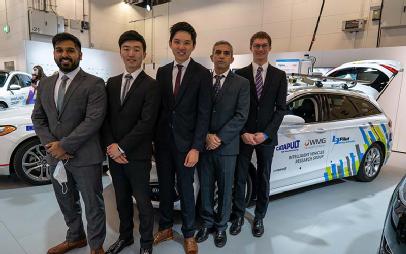 Running from 2017 to 2021, the project consortium brought together stakeholders from the whole value chain, including car manufacturers, suppliers, academia, research institutes, infrastructure and governmental agencies, user groups and the insurance sector.
Running from 2017 to 2021, the project consortium brought together stakeholders from the whole value chain, including car manufacturers, suppliers, academia, research institutes, infrastructure and governmental agencies, user groups and the insurance sector.
The experience of the partners in large-scale testing intelligent vehicle technologies made it possible to create a pan-European testing environment. The Code of Practice for the Development of Automated Driving Functions (CoP-ADF) is one of the major achievements of L3Pilot. It provides comprehensive guidelines for supporting the design, development, verification and validation of automated driving technologies.
Fourteen partners focused on testing automated driving functions in normal motorway driving, traffic jams, urban driving and parking. The pilots, running from April 2019 until February 2021, involved seven countries: Belgium, Germany, France, Italy, Luxemburg, Sweden and the United Kingdom and included two cross-border activities between Germany and Luxemburg as well as Germany, Belgium and the United Kingdom.
WMG, at the University of Warwick focussed on the development of a proof-of-concept prototype and a real-world demonstration of a cutting-edge technology for cooperative perception, using WMG’s state-of-the-art Open Innovation Vehicle Platform and mobile roadside units.
Aiming to enable safe automated driving at complex driving scenarios, such as roundabouts and T-junctions, the equipment was funded by the WMG Centre High Value Manufacturing (HVM) Catapult.Link opens in a new window Specialising in innovation aimed at making transport cleaner, safer and more efficient, the CentreLink opens in a new window works with UK manufacturing partners to develop automated, connected, electric and shared mobility for a sustainable future.
However WMG also contributed to a variety of key project activities including: Cyber Security Analysis of highly automated driving functions in highway environments, known as highway chauffeur, and the development of a Consolidated Database (CDB) to store large datasets acquired in the project during the experimental phase, which also included designing and implementing a web-based User Interface (UI) to provide access to CDB for L3pilot users, for example, partners and data analysts.
Prof. Mehrdad Dianati, from WMG at the University of Warwick comments:
“A major challenge for the safety of automated vehicles is how they will navigate through complex road segments, a part of our role in L3Pilot was to demonstrate how this challenge can be addressed using state-of-the-art cooperative automated driving technology we have developed at WMG.
L3Pilot Coordinator Aria Etemad, Volkswagen AG comments:
“Automated driving has a huge potential to make mobility safer, more efficient and more comfortable. The L3Pilot partners made great efforts to pursue piloting and met the project goals – despite the tremendous pandemic crisis. This shows the outstanding commitment of our Europe-wide partner network. One of our major achievements is a Code of Practice for the Development of Automated Driving Functions. It provides guidelines that will support the development of safe and reliable automated driving systems.”
 The project equipped 70 vehicles and the test fleet comprised 13 different vehicle brands, from a passenger car to a SUV. More than 400,000 kilometres were driven on motorways including 200,000 km in an automated mode and 200,000 km in a manual mode as a baseline for comparison of the user experience and evaluation of the impacts. More than 24,000 km were travelled in the automated mode in urban traffic. With the aim to put the focus on the user experience of automated driving functions, over 1,000 persons participated in piloting and complementary virtual environment tests.
The project equipped 70 vehicles and the test fleet comprised 13 different vehicle brands, from a passenger car to a SUV. More than 400,000 kilometres were driven on motorways including 200,000 km in an automated mode and 200,000 km in a manual mode as a baseline for comparison of the user experience and evaluation of the impacts. More than 24,000 km were travelled in the automated mode in urban traffic. With the aim to put the focus on the user experience of automated driving functions, over 1,000 persons participated in piloting and complementary virtual environment tests.
The project focused on SAE Level 3 automated driving functions on motorways and in urban traffic, while SAE Level 4 functions targeted exclusively parking and close-distance scenarios. The SAE Level 3 features Conditional Automation which requires the driver to respond appropriately to a request to take-over the vehicle control for manual driving. In case the driver is not responding properly to a take-over request, the vehicle performs an automatic minimum risk manoeuvre to safely stop the vehicle.
Moreover, L3Pilot carried out extensive supplementary tests to also research user experiences that were difficult to address in large-scale piloting due to safety requirements and legal issues. Therefore, supplementary studies were performed in addition to the on-road piloting to be able to study system usage and other relevant user experiences with ordinary, non-professional drivers in safe and virtual environments. The extensive studies comprised some 600 subjects.
Research evaluation results have shown that increased safety is the main benefit of SAE Level 3 automated driving systems. They also show that an automated driving system consisting of motorway, urban and parking functions for robust hands-off driving will generate a social benefit that is higher than the social costs of installing it.
L3Pilot paved the way for scaled-up driving tests with automated series vehicles in real-life traffic. This underscores the leadership of Europe's automotive industry in developing reliable, thoroughly tested and user-friendly technology.
ENDS
12 OCTOBER 2021
NOTES TO EDITORS
High-res images available at:
https://warwick.ac.uk/services/communications/medialibrary/images/september_2021/microsoftteams-image_5.png
Caption: WMG, at the University of Warwick demonstrating their technical achievement at ITS World Congress.
Credit: WMG, University of Warwick
https://warwick.ac.uk/services/communications/medialibrary/images/september_2021/microsoftteams-image_7.png
Caption: WMG, at the University of Warwick demonstrating their technical achievement at ITS World Congress.
Credit: WMG, University of Warwick
https://warwick.ac.uk/services/communications/medialibrary/images/september_2021/microsoftteams-image_8.png
Caption: WMG, at the University of Warwick demonstrating their technical achievement at ITS World Congress.
Credit: WMG, University of Warwick
https://warwick.ac.uk/services/communications/medialibrary/images/september_2021/microsoftteams-image_9.png
Caption: WMG, at the University of Warwick demonstrating their technical achievement at ITS World Congress.
Credit: WMG, University of Warwick
https://warwick.ac.uk/services/communications/medialibrary/images/september_2021/microsoftteams-image_10.png
Caption: WMG, at the University of Warwick demonstrating their technical achievement at ITS World Congress.
Credit: WMG, University of Warwick
Video available to view at:
https://www.youtube.com/watch?v=eJnzMGcr9Fc
Credit: WMG, University of Warwick
L3Pilot is an Innovation Action, co-funded by the European Union under the Horizon 2020 programme with the contract number 723051. Thirty four organisations have committed to scientifically test and assess the impact of automated driving systems on driver comfort, safety and traffic efficiency as part of the project.
www.l3pilot.eu
Twitter _L3Pilot_
LinkedIn: L3Pilot
Duration: 50 months, 1 September 2017 – 31 October 2021
Total cost: €68 million
EC contribution: €36 million
Coordinator: Volkswagen AG
Partners:
Automotive manufacturers: Volkswagen AG, AUDI AG, BMW Group, Stellantis | Centro Ricerche Fiat SCPA, Ford, Honda R&D Europe, Jaguar Land Rover, Mercedes-Benz AG, Adam Opel AG, Stellantis, Renault, Toyota Motor Europe, Volvo Car Corporation
Suppliers: Aptiv, FEV GmbH, Veoneer Sweden
Research: German Aerospace Center DLR; ika RWTH Aachen University; VTT Technical Research Centre of Finland; Chalmers tekniska hoegskola; SNF – Centre for Applied Research at NHH; University of Leeds; Institute of Communication and Computer Systems ICCS; Würzburg Institute for Traffic Sciences WIVW; University of Genoa; TNO – Netherlands Organisation for Applied Scientific Research; WMG, University of Warwick; European Center for Information and Communication Technologies – EICT GmbH
Authorities: Federal Highway Research Institute BASt; The Netherlands Vehicle Authority RDW
User Groups: Federation Internationale de l’Automobile FIA
Insurers: AZT Automotive GmbH, Swiss Reinsurance Company
SMEs: ADAS Management Consulting,
For further information please contact:
Alice Scott
Media Relations Manager – Science
University of Warwick
Tel: +44 (0) 7920 531 221
E-mail: alice.j.scott@warwick.ac.uk
Warwick student projects showcased at Our Future Moves
Students from across WMG and the School of Engineering have been showcasing their work at the Our Future Moves exhibition at the Coventry Transport Museum.
The exhibition is filled with contraptions, inventions, innovations and demonstrations showing the mechanisms and machinations of all things that move. The students have contributed several pieces to the exhibition that showcase their skills and imagination when it comes to futuristic transport.
Satellites
There are satellites from WUSat, the student team who are building nanosatellites to explore space and improve communications on earth. The students are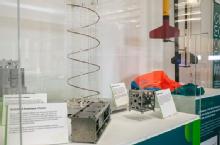 working on satellites that can orient themselves in space accurately enough to monitor wildlife populations on earth. Find out more here: OFM5: City Ecology // Our Environment — Culture Space Coventry
working on satellites that can orient themselves in space accurately enough to monitor wildlife populations on earth. Find out more here: OFM5: City Ecology // Our Environment — Culture Space Coventry
There are racing car components from Warwick Racing, the team that build a functioning electric race vehicle to compete in the Formula Student competition each year.
Submarines
The third student project on display is the Warwick Sub Team’s human-powered submarine. The students are tasked with designed and building the submarine to compete against other universities. The competition is usually held every-other-year at the US Naval Base in Cardarock, Maryland in the US, but due to the Covid19 pandemic it was held virtually this year. The students have won many accolades throughout the years. This year the team received Honourable Mentions’ in the ‘Manoeuvring and Control Subsystem Design Challenge’ and the ‘Thrust Production Subsystem Design Challenge’ categories.
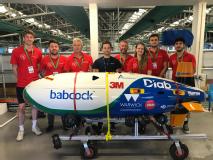 Sharing her experiences of the Warwick Sub team, Verena Oetzmann, Team Leader in 2016-2017, says: “In addition to all the challenges that we women in engineering face, being the female leader of an otherwise all male team was a demanding but very rewarding role. The lessons I have learnt throughout my time, coupled with the many skills procured along the way, have been invaluable as preparation for working life after university.
Sharing her experiences of the Warwick Sub team, Verena Oetzmann, Team Leader in 2016-2017, says: “In addition to all the challenges that we women in engineering face, being the female leader of an otherwise all male team was a demanding but very rewarding role. The lessons I have learnt throughout my time, coupled with the many skills procured along the way, have been invaluable as preparation for working life after university.
“Despite being the most difficult venture that I have undertaken at university, it is certainly among the most enjoyable, rewarding and memorable experiences I have ever had.”
Professor Ian Tuersley, Project Director for Warwick Sub, adds: “It is clear that our students who are fortunate enough to be involved in the International Submarine Race (ISR) competitions enjoy the experience immensely and value the additional benefits that these unique opportunities provide them.
“However, from the point of view of an educator, in addition to the excellent experience there is tangible empirical evidence that the requirements of the competitions – including the necessary enforcement of real-world deadlines and constraints focuses their work and personal development on areas that more traditional University learning is not easily able to deliver. Skills such as team-working, project management, problem solving, budgetary awareness and leadership are essential if success is to be achieved in the competitions – and these are exactly the skills and behaviours that are most highly valued by potential employers.”
The students involved in all these projects learn how to apply their knowledge and gain experience of a real project, run in an industrial style. They make fantastic role models for young people, including Jack Moore (a former Sub Team member) whose profile is also part of the exhibition.
Our Future Moves runs until 31st October at the Coventry Transport Museum, or explore the online exhibition here: https://transport-museum.com/events/1491/our_future_moves
WMG Professor joins Clean Growth Leadership Network
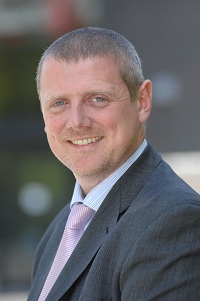 Head of WMG’s Sustainable Materials and Manufacturing Research Group, Professor Kerry Kirwan, has been appointed as a Fellow to the Clean Growth Leadership Network (CGLN).
Head of WMG’s Sustainable Materials and Manufacturing Research Group, Professor Kerry Kirwan, has been appointed as a Fellow to the Clean Growth Leadership Network (CGLN).
The CGLN is committed to economic growth for all whilst substantially reducing carbon emissions. The world-class network is made up of Founders, Fellows, Partners and Members united in their commitment to transform to a global clean economy.
Professor Kirwan explains: “I am delighted to have been appointed as a Fellow of the Clean Growth Leadership Network – the opportunity to work with some of the UK’s leading thinkers and practitioners tackling critical issues on the climate change agenda is hugely exciting. I’m really looking forward to introducing them to our research here at WMG and the wider University.”
Professor Kirwan is a specialist in circular economy, sustainable materials, polymer processing and industrial applications. He has extensive experience of developing environmentally friendly materials for application within numerous industries.
Read more about WMG’s Sustainable Materials and Manufacturing research here: Sustainable materials and manufacturing (warwick.ac.uk)

